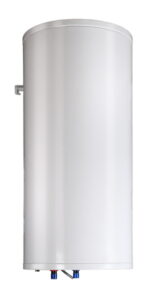A reliable and functional water heater is an essential part of any home. It’s easy to overlook until the day comes when it stops producing hot water or starts to leak. When that time arrives, having the right information at your fingertips can make the replacement process smoother and more efficient.
In this guide, we’ll delve into the key factors you need to consider when it’s time to replace your water heater.
1. Determining the Right Capacity and Fuel Type
The first step in the replacement process is to determine the existing water heater’s capacity and fuel type. Knowing the number of gallons your household requires is crucial in selecting the right unit. A family of four might need a larger capacity than a single occupant, for example.
You’ll also need to know if your water heater uses natural gas, propane gas, or electricity as the fuel source. Having this information ready will ensure the plumber arrives with a unit that fits your needs on the very same day.
2. Identifying the Vent Style
Ventilation is another critical aspect to consider. There are two main types of vents: atmospheric vents and power vents. Atmospheric vents rely on the natural draft to expel exhaust gases, while power vents use a fan to force out these gases. You will know if your unit has a power vent if there is a fan that sits on top of the water heater that also plugs into a nearby outlet. Having this information on hand will help the plumber arrive with a water heater that’s compatible with your ventilation setup.
3. Gathering Necessary Information
Photos speak a thousand words, and in the case of water heater replacement, they can be incredibly helpful. Snap clear pictures of your current water heater and its badge with the model and serial number. This information is invaluable in ensuring you get the right replacement unit with the correct specifications.
4. Preparing for the Replacement Process
Replacing a water heater isn’t an instantaneous task, and some preparation is required. Be ready for the possibility of being without hot water for a period of time. Plan your showers and other hot water needs accordingly to minimize inconvenience.
Additionally, keep in mind that the installation process can take anywhere from 2 to 4 hours. Make arrangements for a plumber’s visit during a time that suits your schedule. This will give them ample time to perform the installation properly, ensuring the new water heater functions optimally.
5. Embrace Annual Maintenance
Once your new water heater is in place, remember that regular maintenance is key to prolonging its lifespan and ensuring efficient operation. The simple task of draining and refilling the unit annually can prevent sediment buildup, which can lead to reduced efficiency and even premature failure. By dedicating a short amount of time each year to this task, you can enjoy hot water consistently while maximizing your investment.
In conclusion, replacing your water heater doesn’t have to be a stressful endeavor. Armed with the right information, you can expedite the process, minimize downtime, and ensure a reliable source of hot water for your home. Remember the importance of knowing your required capacity, fuel type, and vent style, and don’t forget to have those photos and model numbers ready. With a little preparation and the right guidance, you’ll be enjoying the comforts of a new water heater in no time.
Contact Platinum Plumbing & Heating, Inc. today to schedule an appointment with our pros.

